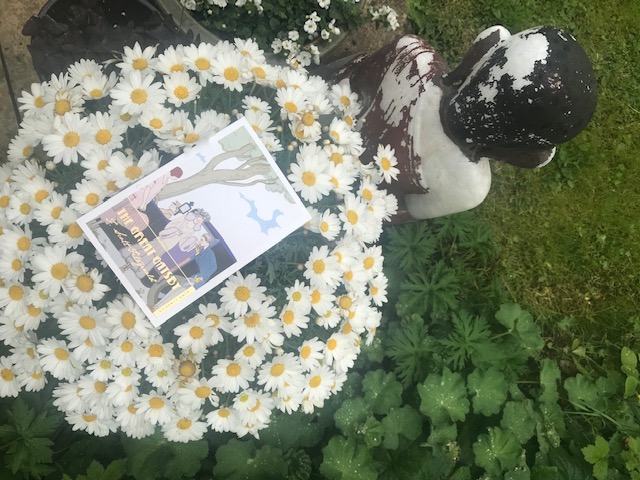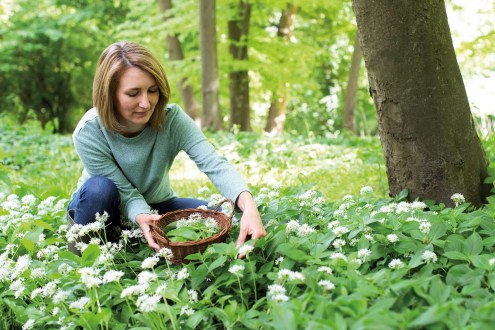On The Great Gatsby, and how to stop living in the past
What makes you feel nostalgic? Old photos, music? For me it is often books. In this post I explore how re-reading The Great Gatsby made me think about nostalgia, and how it can bring comfort and reassurance but also hold us back.

I moved home a couple of months ago, and this entailed a certain amount of decluttering. I am no Maria Kondo and trying to squeeze the contents of a four-bedroom house to a two-bedroom flat required some ruthlessness. Ebay, charity shops and the local recycling centre were the main beneficiaries.
But when it came to packing a lot of books into a lot of boxes, things got complicated. Many of the books; such as The Grapes of Wrath, which sparked my daughter’s interest in America and American Literature, and Laurie Lee’s As I Walked Out One Midsummer Morn, which inspired my son to spend part of his gap year walking across Spain; carry a special poignancy, especially as I was moving from the home they had grown up in. These found their way to my new home. In truth, most of my books did. I am actually pretty rubbish at decluttering!
This set me on a path of reflection about how old photos, books and music can make us feel nostalgic, which is often a good thing; providing comfort and reassurance in times of uncertainty and change. So when my hand alighted on F. Scott Fitzgerald’s The Great Gatsby I remembered that this, of all the great novels, it is the one most closely associated with nostalgia, so sat down for a re-read.
In Fitzgerald’s masterpiece there is a veritable festival of nostalgia going on in the mind of the enigmatic Jay Gatsby, with disastrous results. In seeking to recreate what he believes to have been the perfect romance between him and Daisy, he fails to take into account the experiences both of them have had during the time they have spent apart, which includes the First World War and Daisy’s marriage to someone else, and recognise how they, and the world around them, has changed as a result of these. So he embarks on a fruitless, and doomed, attempt to win Daisy back, using all and any means.
Gatsby’s nostalgia was misplaced, precisely because his attempts to recreate the past were stubbornly incognisant of the current reality. Published in 1925, critics drew allegorical parallels between The Great Gatsby, post-war America and the New World Order. And the book’s closing sentence “So we beat on, boats against the current, borne back ceaselessly into the past” became a metaphor for a nostalgia which impedes any attempt to progress, to move forward, rendering this ultimately futile.
Of course there are modern political parallels if we choose to see them. Contemporary political rhetoric has frequently invoked nostalgia, and people have based their votes on it. But The Great Gatsby also has lessons for us on a personal level.
So just how do we hold on to the lessons of the past (because otherwise, we are told, we are doomed to make the same mistakes again) but avoid endlessly trying to recreate it? How do we honour our memories; perhaps from a particularly happy period of our life, or a love affair we once had; without living in them?
We can start the process by unpacking insights between the past, and the now. What has happened in between? Gatsby’s mistake was that he wanted to forget this. But if we feel stuck, understanding the events – all the events – that led us to this position, may help us gain a new understanding. We may find things we have forgotten, when the outcome has been positive – times when we have taken risks, shown our strengths and developed new skills, and these have worked well for us.
We can also explore what might be holding us in the past. Is it fear of the future? Staying with our memories of the (usually rose-tinted) past can be like returning to a comfort zone. Dispelling this fear is no easy task. We can help ourselves by facing it head on, perhaps with the help of a coach. Understanding our fear is the first step in learning how to tame it. Remember that our worst fears rarely come true, so if we imagine the potential worst thing that can happen, we can do what we can to strategise against it.
Moving on may entail the need to forgive ourselves, or someone else, for events that took place a long time ago and about which we can do nothing. These things won’t disappear on their own, so we need to take a conscious decision to let go of them. Expressing or writing them down may help.
If it is yourself you need to forgive, are you going to allow yourself to be defined by a mistake you made a long time ago? Or are you going to take responsibility for your actions, then and now, and make the choice to start feeling better?
Above all, we can practice being in the present. We can’t go back to the past and we can’t predict the future, so it stands to reason that the present is the best place to be. It’s our half-way post, so it is part of moving forwards.
Louise Rodgers
Founder & coach
The competing pressures of modern life can make it hard to keep a sense of who you are, what you want, and the steps you need to take in order to live your “best life”. I give the individuals and businesses I work with the opportunity to stand back and take stock. A skilled thinking partner to work with while you do this may be all you need in order to find clarity, a renewed sense of purpose and a good view of the road ahead. I call this process reflect, reframe and refocus and I do my best to make sure it is a fun, creative and thought-provoking journey of self-awareness. Before training as a coach with Barefoot, I co-founded and ran my own PR agency. I know what it’s like to build and lead a creative start-up, to juggle multiple projects and to find some balance between work, home and family life. I have found my niche in working with creative individuals and entrepreneurs from all backgrounds. Past clients have included one who runs a ninja training gym, another embarking on a new career as delicatessen owner and a third who now heads up a social enterprise business.



